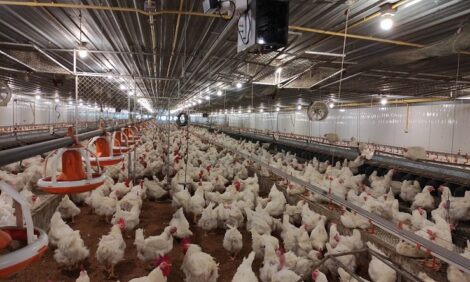



International Egg and Poultry Review
By the USDA's Agricultural Marketing Service - This is a weekly report looking at international developments concerning the poultry industry, this week looking at the latest in Japan.
Japan's Broiler Situation
Japan's broiler market is facing increases in domestic broiler production
and broiler imports. Although household consumption was up 2% for
the first half of the year, domestic production was up 5% and imports
rose 9% for the first six months of 2006. Japan's total broiler
consumption in 2006 is projected to increase by 1% to 1.908 million
MT. Imports of U.S. broiler meat (mostly bone-in leg) are projected to
grow by 9% from last year to 35,000 MT, helped by solid demand for
bone-in leg for domestic de-boning. Due to an overall surplus, import
growth of the prepared and processed products is anticipated to slow
during 2006. Ending stocks are expected to rise substantially, up by
21% to 145,000 MT.
Earlier estimates for domestic broiler production in 2006 totaled 1.150
million MT, slightly lower than the estimate of 1.166 million MT produced
in 2005. However, producers seemed to react to uncertainty over limited
imports due to avian influenza and Newcastle disease and responded
by increasing domestic production this year. Producers may be
speculating that there will be trade disruptions due to HPAI outbreaks
in other countries. The revised domestic output in 2006 is projected at
1.195 million MT, two percent higher than the previous year. Domestic
broiler meat production is forecast to decline slightly in 2007, to 1.185
million metric tons.
Surplus inventories in Japan are expected to cap import growth of
processed and prepared products and create increased competition
between Thailand and China in the food service and ready to eat market
segments. Demand for Brazilian generic broiler meat will remain weak
in 2007, however U.S. exports to Japan, mostly bone-in leg, should
remain constant in 2007 at about 35,000 MT annually. Brazilian generic
broiler meat imports are mostly boneless leg, and projected down 5%
to 335,000 MT. Thailand has new traceability and sanitary programs
and procedures that could give Thailand a marketing advantage over
China, which is currently Japan’s top supplier of cooked products.
According to trade sources, some Brazilian boneless cuts have been
making inroads into Japan through overseas brokers at substantial
discounts. This contributed to increased imports from Brazil during the
first half of the year. Prevailing surplus and overwhelming stocks are
accumulating and Japan’s imports from Brazil will likely be cut back in
the second half.
Source: ALIC
Japan's Trade and Economic Partnership Agreements
Japan and Chile have reached an agreement in principle on major
elements of an Economic Partnership Agreement (EPA). Japan's
agreement with Chile will set tariff quotas for beef, pork and chicken.
Japan and Mexico have finalized an agreement that stipulates the inquota
rate of Customs-Duties applied on poultry meat during the period
from the second year to the fifth year after the entry into force of the
Agreemnt. Tariffs on chicken will be cut by 20%.
Japan has trade agreements with Singapore, Malaysia, Philippines,
Thailand and Mexico. Japan recently entered into talks with the Gulf
Cooperation Council (GCC), somposed of Bahrain, Kuwait, Oman,
Qatar, Saudi Arabia and the United Arab Emirates.
Source: The Ministry of Foreign Affairs of Japan, news wires
To view the full report, including tables please click here
ThePoultrySite News Desk








